1937-1946 – The First Decade: Called to an extraordinary Adventure
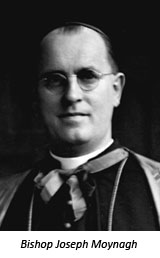 “To us who saw Mother Mary on to the boat, her going seemed to be the end of any hope for the new venture. Indeed, it seemed doubtful if she could reach Ireland alive.” So wrote Bishop Joseph Moynagh, who had just inaugurated the Medical Missionaries of Mary on April 4, 1937.
“To us who saw Mother Mary on to the boat, her going seemed to be the end of any hope for the new venture. Indeed, it seemed doubtful if she could reach Ireland alive.” So wrote Bishop Joseph Moynagh, who had just inaugurated the Medical Missionaries of Mary on April 4, 1937.
He felt that “from the human point of view the whole future of the new Congregation seemed precarious in the extreme. The Mother Foundress was on her way to Ireland extremely ill. There were but two Sisters on the Mission – Novices. There was no support financial or otherwise and the new Congregation was unknown…”
Nevertheless he added, “She left Nigeria not at all perturbed by the course of events but with that trustful smile on her face that only those who put their trust in God can have.”
Dr. Braithwaite, who had cared for her at the Government Hospital in Port Harcourt, helped her on board the Accra, then turned to Bishop Moynagh on the shore and said, “Never let me see that woman in Africa again.”
The voyage from Nigeria to Ireland gave the newly-professed Foundress a chance to regain some strength. The final hours of the voyage were delayed by fog, but by the time the Accra docked at Liverpool at 11 pm on 9 May, she was at the rail, waving to her brother, Andrew, and the future Sister Immaculata Nichols, then a young student nurse in London.
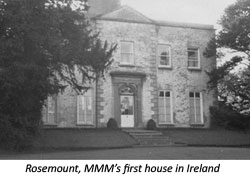
Mother Mary was not long back in Ireland before Archbishop Edward Byrne of Dublin approved the establishment of the newly-born Congregation’s first Irish home, Rosemount, in Booterstown. From here the future Sister-students would attend courses in the city hospitals and university. On the last day of 1937, MMMs moved into Rosemount,, which today houses the Congregational Centre.
Before long, the Archbishop of Armagh, Cardinal MacRory, helped her establish the first novitiate on the main street in the historic village of Collon, in the Valley of the Boyne, close to the Cistercian Monastery of Mellifont. That was opened on 11 December 1938.
In Nigeria, Mother Mary’s first two companions, Bridie O’Rourke (who became Sister M. Magdalen) and Mary Moynagh (a sister of Bishop Moynagh, who became Sister M. Joseph), completed their novitiate with the Sisters of the Holy Child at Ifuho and made their first profession of vows on 15 December 1937. 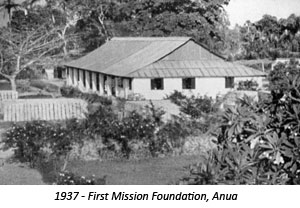 In Anua, they took up duty at Saint Luke’s Hospital, a small mission hospital with a twelve-bedded ward. Before long, it would become a widely-renowned three hundred-bed training facility until the setbacks of war several decades later.
In Anua, they took up duty at Saint Luke’s Hospital, a small mission hospital with a twelve-bedded ward. Before long, it would become a widely-renowned three hundred-bed training facility until the setbacks of war several decades later.
In Ireland, the young community began to expand in numbers, and soon was overflowing from the small house in Collon. In 1939 that problem was solved when the MMMs were asked to take over a much-needed maternity home in the town of Drogheda, about nine miles away.
It was a momentous undertaking for the Medical Missionaries of Mary, who numbered only three professed Sisters at that time. On 8 December 1939, the hospital that would later be known as Our Lady of Lourdes was registered. On 25 January 1940, the community of novices moved from Collon.
At the same time, the first issue of the magazine The Medical Missionary of Mary, was published and has continued in print to the present. It now bears the masthead Healing & Development.
By this time, World War II was raging. Although Ireland was neutral, the country was deeply affected by the restrictions in travel and the general shortages. Nevertheless, the foundation stone for the new novitiate building was blessed on May 26, 1940. Mother Mary also embarked upon much-needed extensions to the hospital in Drogheda, the first of which was completed in 1942. With it came State recognition for the first stage of training for midwifery students. Another extension was completed in 1946. By then there was further State recognition, for general nurse training.
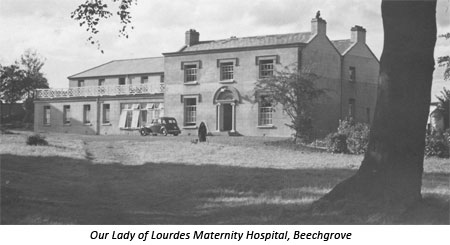
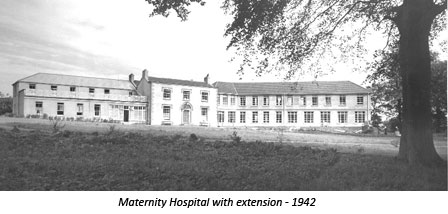
In Nigeria, meanwhile, the work at Anua was expanding to reach more and more outstations. In 1945, an invitation to spread further afield was accepted, when Bishop Thomas McGettrick asked MMM to come to Ogoja, where an Irish doctor, Joseph Barnes, had completed a survey that revealed that some 47,500 people in the area were suffering from the dreaded condition of leprosy – known today as Hansen’s disease.
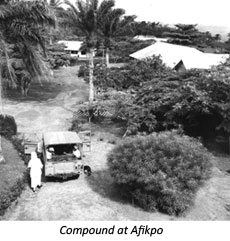 The voyage of the four pioneers who left Drogheda to make the MMM foundation in Ogoja Diocese has been well documented. They sailed in convoy through mined seas and enemy submarines to reach Nigeria.
The voyage of the four pioneers who left Drogheda to make the MMM foundation in Ogoja Diocese has been well documented. They sailed in convoy through mined seas and enemy submarines to reach Nigeria.
The work of bringing Hansen’s disease under control led to the foundation of Saint Patrick’s Hospital at Abakaliki in 1945, and in 1946, small clinics at Afikpo and Obudu, which gradually developed into much larger hospitals.
In 1946, Mother Mary, always conscious of the need to use the best media available to make known the pressing need for medical care, contacted the London-based film director, Andrew Buchanan, about making a film to be called Visitation. Of this production, Andrew Buchanan later wrote: “I have been producing films for more than twenty years, but the making of this one has been my greatest privilege.”
As the First Decade of MMM’s history was drawing to a close, more pioneers at our Motherhouse in Drogheda were packing their trunks for the first foundation in East Africa, in a land then known to us as Tanganyika.
< MILESTONES POSTS
